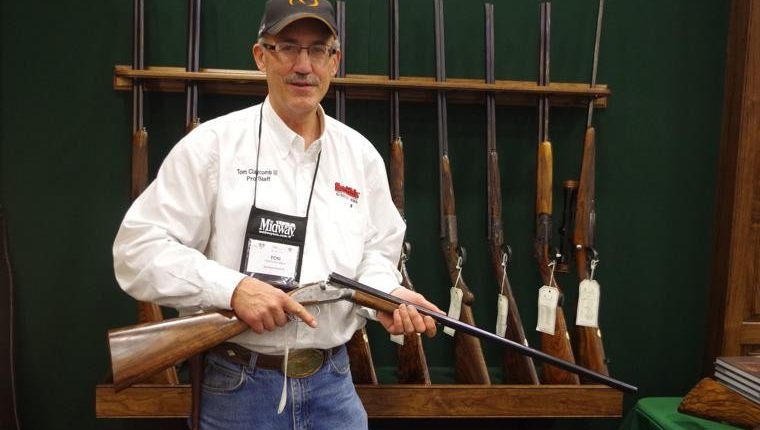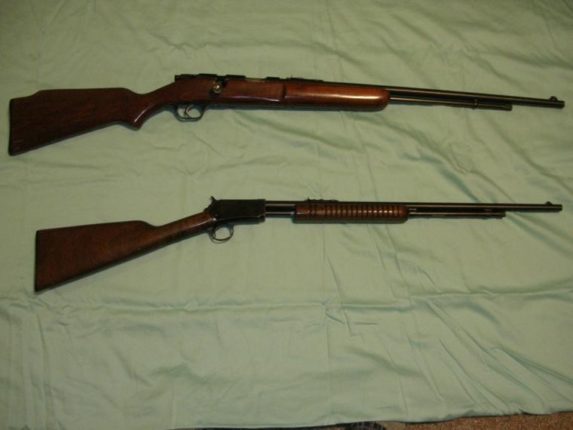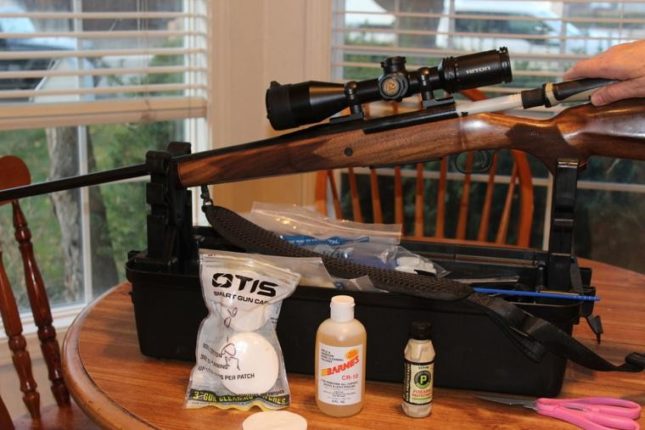In the last two decades, Dutch-oven cooking has gained monumental acclaim. A lot of the articles I write I feel like I barely get to do them justice because of my limited space, but on this topic I really am just going to barely scratch the surface. There’s been no telling how many books have been written on this subject.
When you think about Dutch ovens, your mind automatically drifts back in time to the old trail drives and cowboy chuck wagons. It’s the crack of dawn and while everyone is roping their horse for the day, the cook scoops a shovel full of hot coals out of the fire. He throws some on top and some on bottom of his old Dutch oven and heats up a batch of sourdough biscuits. In a short amount of time, the cowboys all line up single file as he serves them up a hot cup of coffee, biscuits, scrambled eggs and sausage.
Now let’s fast forward 100 years. The modern-day Dutch-oven cooks are chefs that demand an exact heat level. My buddy Paul Loree strategically places a certain amount of coals on top and on bottom for the exact heat he wants for that recipe.
I bought my first Dutch oven in 30 years ago. I messed around with it, but years later I attended a class that Paul taught. That’s where I really learned how to do it right. Paul has taught thousands of people how to cook Dutch oven.
Where do we start? The first step is to buy a Dutch oven and bring it home and scrub it out with hot soapy water and a Brillo pad. This will remove the wax, grease or whatever the heck it is they protect them with at the factory. (Many manufacturers claim to preseason their Dutch ovens, but I still do it myself.)
Dry it off. Grease it up and fire up your oven to 400 degrees. Throw it in the oven for an hour. Let it cool off and pull it out. Grease it up and it is ready to use. From now on you will never use soap on it again or it will remove the seasoning and you’ll have to re-season it. From now on to clean it, scrub out the old food and heat and grease.
Here are a few good Dutch oven cookbooks:
- “Lovin’ Dutch Ovens: A Cook Book for the Dutch Oven Enthusiast” by Joan S. Larson
- “The Outdoor Dutch Oven Cookbook” by Sheila Mills
- “Cast Iron Cuisine” by Linda Cawley and Geri Munford (A good one for beginners)
Buy one of these books and try some of the recipes. Remember, every time you open the lid to peek in it increases the cooking time by five minutes.
There is a wide array of tools and accessories to make life easier when cooking with a Dutch oven. Tongs to lift the lid, lid holders and charcoal starters are just a few. Paul will shoot me for being a heretic because in the old days they got by without all these gimmicks. It’s just that they make life easier.
Shortly after attending Paul’s class I took my boss Doug Pagler bear hunting. We got back to camp after dark and I was preparing dinner and was worried that I didn’t have charcoal and was trying to carefully measure out some hot coals. Doug brushed me aside and said quit worrying about it. He grabbed the shovel and scooped a load and laid it on top. I told him we needed so and so many coals. He told me not to worry, he’d been cooking Dutch oven for years. Then he said something that clicked. He asked me if I really thought that the old cowboy carried a bag of charcoal to cook with?
As best I remember we ate every bit of whatever it was I was cooking, so I guess it wasn’t too bad. It’s just that the cooks nowadays have exact heat temps and know exactly how long to cook a meal. There’s no guesswork — for them it’s just like using an oven. They know for each recipe exactly how many charcoal briquettes to lay on top and how many on bottom.
Remember, though, in the cowboy days all they had to use was the coals they scooped out of the fire pit. All my buddies are hardcore and use an exact number of charcoal briquettes. You can also double stack ovens to conserve coals. Paul cuts the side out of a metal trash can and stacks his ovens in it. That blocks the wind and helps him cook faster.
You can buy a variety of brands and sizes of Dutch ovens. The most common is the 8-quart oven. They even make aluminum ones. They are unbelievably light. Paul packs them in on his horses. And they make an anodized one if you’re worried about Alzheimer’s. The aluminum is light and cleans easier, but the cast iron has a more even heat. Whichever one you buy, get one with a lip on top and legs on bottom. This way you can put coals on top. Lodge is the best brand that I’ve found. The walls have a more consistent thickness, the lid seats better and the handle works smoothly.
What can you cook? The sky is the limit. The classes that Paul taught were four weeks long. The first class he taught for the first two hours and then served the whole class. He had cooked a whole turkey, enchiladas and lasagna for a main course. For dessert, he had cherry cobbler, and if you didn’t like cherries he had peach cobbler. I was totally sold after that meal. Now it’s a given. If we’re having a barbecue, we tell Paul to bring whatever he wants as long as it’s a Dutch oven special.
A couple of years ago, we had a dinner for our cattle suppliers. We had a guy with an outfit named Going Dutch or something like that cater the meal. He fed more than 300 cowboys with Dutch ovens. He grilled some ribeyes and cooked potatoes in his Dutch oven. They were sliced and cooked with cheese and jalapeños. They were worth dying for.
I’m telling you. You can cook anything. Paul even cooks pizza. Here are a couple of easy recipes to get you started.
Doug Pageler’s Quiche
- 4-5 eggs
- 1 to 1-1/2 cups Bisquick
- 1 can of mushrooms
- 1 can Rotel tomatoes
- 1 large onion chopped
- 8 oz. cheese
- 1 lb sausage
Charlie’s Honey Buns
- 1 cube butter
- 1-1/2 cups brown sugar and 2 tbsp Karo syrup
- ½ cup chopped nuts
- 2 cans Pillsbury Grands biscuits
Line a 12-inch Dutch oven with aluminum foil. Place Dutch oven over 5 or 6 coals and melt butter. Stir in brown sugar and nuts gently. Slice biscuits in 1/2 or ¼ and drop all around on top of the brown sugar mixture. Cover with lid and 12 to 14 coals on top. Bake until golden brown — about 15 minutes. Dump onto a large plate and let the goo drip down the sides.
If your salivary glands aren’t salivating by now, you’d better get yourself checked out. You ought to buy a Dutch oven this fall and try it out in hunting camp. It’ll add another dimension to your camping experience and will guarantee you a spot in any camp.
Tom Claycomb lives in Idaho and has outdoors columns in newspapers in Alaska, Idaho, Utah, Nevada, Colorado and Louisiana. He also writes for various outdoors magazines and teaches outdoors seminars at stores like Cabela’s, Sportsman’s Warehouse and Bass Pro Shop.




